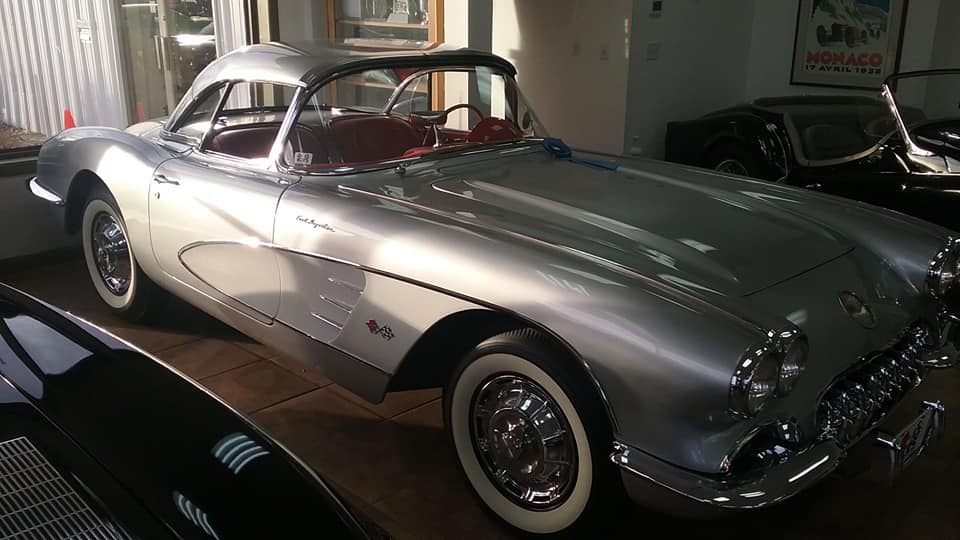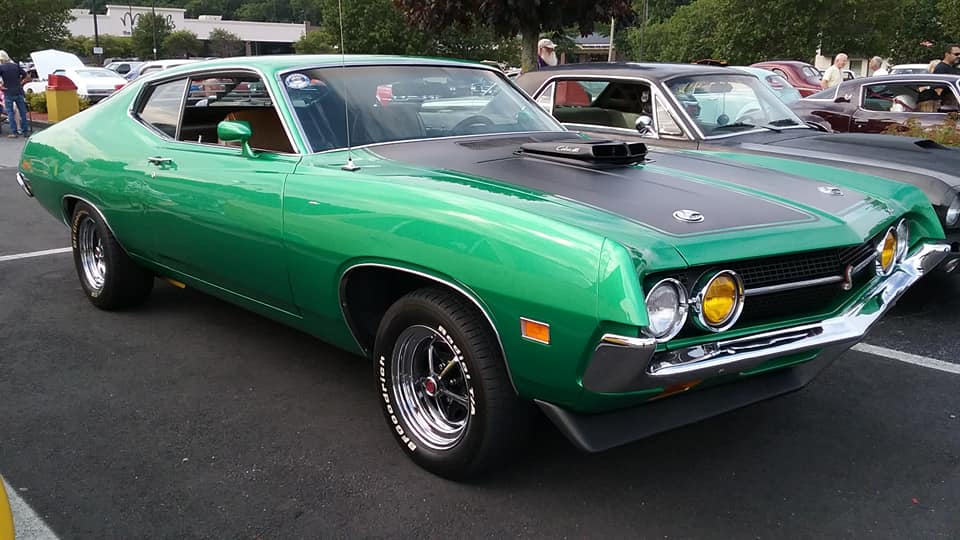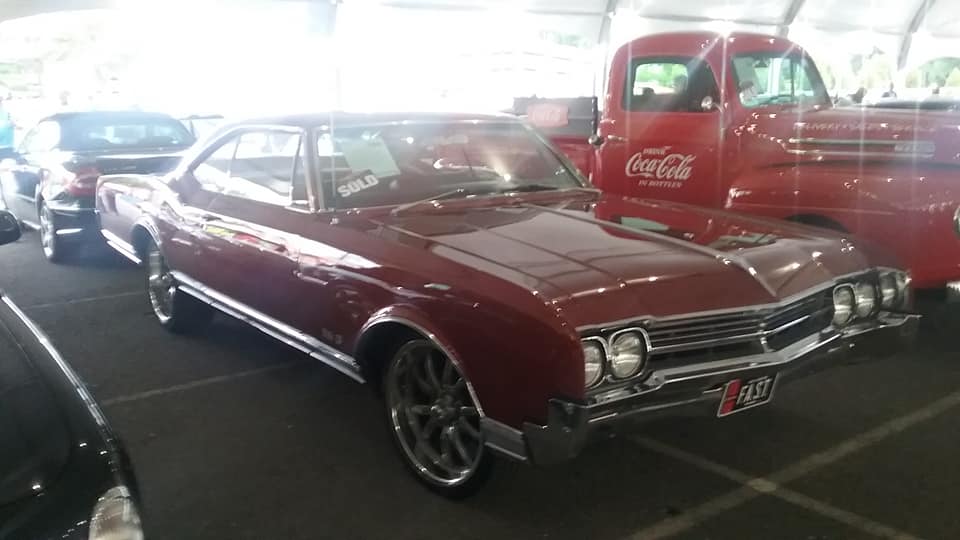Ned Lamont’s First Day as Governor
End of the World Survival
Jimmy Koplik Talks Woodstock 50

Ned Lamont’s First Day as Governor
End of the World Survival
Jimmy Koplik Talks Woodstock 50

The playoffs are here, and Patriots are trying to play underdog. Andrew Krause was in with Phil to break down the matchups this weekend, the upsets from the Wild Card round, and why Dak Prescott is the most dangerous quarterback still playing.

Car: Chevrolet C-1 Corvette Fuel-Injection
Year: 1959
What makes it special: In an era of chrome and four headlamps, the Corvette succumbed to the look of the day. Starting with the 1958 model year and the four that followed, all had the exposed four-headlamp treatment and prominent grills.
What made it famous: For the 1959 model, engines and horsepower ratings did not change. Interiors were revised slightly with different instrument graphics and the addition of a storage bin to the passenger side. A positive reverse lockout shifter with “T” handle was standard with 4-speed manual transmission. This was the only year a turquoise convertible top color could be ordered, and all 24-gallon fuel tank models through 1962 could not be ordered with convertible tops due to inadequate space for the folding top mechanism. Rare options: RPO 684 heavy-duty brakes and suspension (142), RPO 686 metallic brakes (333), RPO 276 15″×5.5″ wheels (214), RPO 426 power windows (547), RPO 473 power convertible top (661). Optional engine choices included two with twin carburetors, including a 270 hp model with Carter 2613S and 2614S WCFB 4-barrels, and two with fuel injection. Power output for the highest rated fuel-injected engine was 290 hp. Displacement remained 283 cu in.
Why I would want one: When I think of Corvettes, I generally think of the C-1.
Fun fact: It is commonly referred to as the “Solid-axle” generation, as the independent rear suspension did not appear until the 1963 Sting Ray.

Goodbye to You
Amy the Cuddlist
Dr. Tammy and Amy
Bob Woodward Talks Watergate Scandal, JFK Assassination, Trump
Donald Trump’s Oval Office Address

Car: Ford Torino Cobra
Year: 1970
What makes it special: For 1970, the Torino became the primary model and the Fairlane became a sub-series of Torino. Ford moved away from emulating the boxy lines of the full-size Fords to a completely new body for the 1970 Torino/Fairlane line influenced by coke bottle styling. Ford stylist Bill Shenk designed the 1970 Ford Torino, and was inspired by supersonic aircraft with narrow waists and bulging forward and rear fuselages needed to reach supersonic speeds.
What made it famous: The 1970 Torino had more prominent long hood short deck styling, and was longer, lower and wider than the 1969 models. The sporty “Torino GT” was available as a 2-door SportsRoof and convertible. The performance model, the “Torino Cobra” was available as a 2-door SportsRoof only. The engine line-up received major changes, and only the 250 cu in Inline-6, 302-2V and the 351W-2V were carried over from 1969. Optional engines included the 302-2V, standard on GT and Brougham models, 351W-2V, the new 351 Cleveland available with a 2- or 4-barrel carburetor, and the new 429-4V 385 Series V8, standard on the Cobra models. The 429-4V was available in three different versions. Ram Air induction was optional on the 351C-4V, 429 CJ and 429 SCJ. The Ram Air option included a “Shaker Hood” where the scoop was attached to the top of the air cleaner assembly, and protruded through a hole in the hood. A 3-speed transmission was standard on all models except for the Cobra which came with a 4-speed as standard equipment. The Cruise-O-Matic was optional for all engines while the 4-speed transmission was available on all engines except the six and the 302-2V
Why I would want one: I have loved this body-styled Torino since it was produced. Its sport and muscle car all in one.
Fun fact: Ford also chose the Torino as the base for its NASCAR entrants, and it has a successful racing heritage.

Joe the Weed Guy and Weed Stock Tips
Amy the Professional Cuddlist
Senator Blumenthal in Studio
Malloy’s Last Day


Car: Oldsmobile Delta 88 Holiday Hardtop Two-Door Coupe
Year: 1966
What makes it special: The Oldsmobile 88 was sold and produced from 1949 until 1999. From 1950 to 1974 the 88 was the division’s top-selling line, particularly the entry-level models such as the 88 and Dynamic 88. The 88 series was also an image leader for Oldsmobile, particularly in the early years when it was one of the best performing automobiles thanks to its relatively small size, light weight and advanced overhead-valve high-compression V8 engine. This engine, originally designed for the larger C-bodied and more luxurious 98 series, also replaced the straight-8 on the smaller B-bodied 78.
What made it famous: The B-body cars featured more rounded styling than previous years with Coke-bottle profiles and semi-fastback rooflines on Holiday two-door hardtop coupes. Also introduced this year was a new 425 cubic-inch Super Rocket V8 with horsepower ratings ranging from 300 to 370 depending on carburation and compression ratio. The new 3-speed Turbo Hydramatic transmission with torque converter replaced the Roto Hydramatic used since 1961. Also new to the option list on all B-body cars was a 4-speed manual transmission with Hurst floor shifter, which was a seldom-ordered offering. Few styling changes other than revised grilles and tail sections marked the 1966 full-sized Oldsmobiles.
Why I would want one: It’s a big car, but the styling makes it feel more custom and muscle car than land yacht. Just a good-looking, big car.
Fun fact: With the large, high performance V8, the Oldsmobile 88 is widely considered to be the first muscle car, although this title is disputed.

Chaz’s Cake, Scot Haney
AJ Nearly Lost a Finger
Street Pete’s Court Audio – Best of 2018
#DumbAssNews – Drunken New Year’s Resolutions

Car: Datsun 240-Z Coupe ( aka Nissan S30 )
Year: 1972
What makes it special: The Nissan S30, sold in Japan as the Nissan Fairlady Z and in other markets as the Datsun 240Z, then later as the 260Z and 280Z, was the first generation of Z GT two-seat coupes, produced by Nissan Motors, Ltd. of Japan from 1969 to 1978. One of the most successful sports car lines ever produced, the trend-setting S30 was designed by a team led by Yoshihiko Matsuo, the head of Nissan’s Sports Car Styling Studio. Seeking to compete head-to-head with established European sports cars, Datsun priced the new 240Z within $200 of the British MGB-GT in the United States, a five-year-old design that showed its age. As a “Halo” car, the 240Z broadened the acceptance of Japanese car-makers beyond their econobox image.
What made it famous: The 240Z’s sleek styling, modern engineering, relatively low price, and impressive performance struck a major chord with the public. In mid-1971, for the Series II 240Z-cars, the sail pillar emblems were restyled with just the letter Z placed in a circular vented emblem, and the vents were eliminated from the hatch panel of the car. Powering these sleek little sports cars was a 2,393 cc 2.4 L; 146.0 cu in L24 inline-six engine, cast iron block, alloy head, two valves per cylinder, seven-bearing crankshaft, SOHC, with a 9.0:1 compression ratio 9.0:1. It’s maximum recommended engine speed was 7,000 rpm. It was backed by a 4-speed manual transmission: 3.364:1.
Why I would want one: I had the 1979 280-ZX, and loved it. The 240-Z was smaller, and a much-better looking car in my opinion. It had more of a sports car look and feel.
Fun fact: In 2004, Sports Car International named this car number two on their list of Top Sports Cars of the 1970’s.